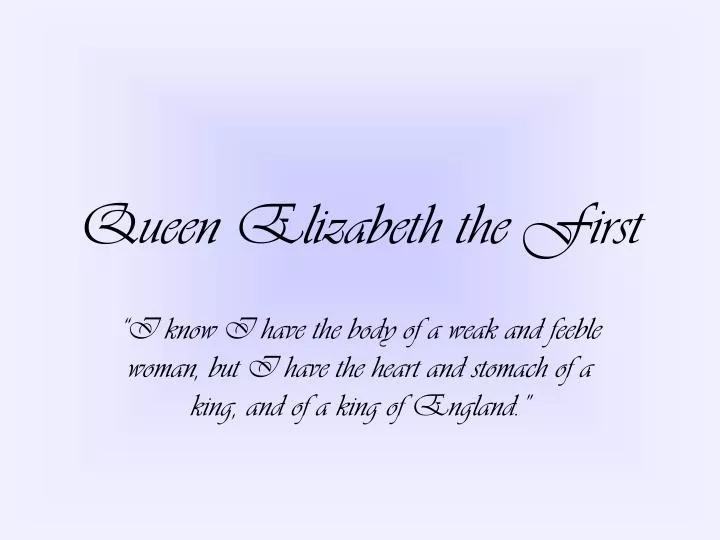

Queen Elizabeth the First
Jul 14, 2014
130 likes | 462 Views
Queen Elizabeth the First. “I know I have the body of a weak and feeble woman, but I have the heart and stomach of a king, and of a king of England.”. A leader is…. Determined Intelligent Unwavering in values Courageous Good judgment Open-minded Unselfish. The Life of Queen Elizabeth I.
Share Presentation
- most glorious
- spanish armada
- her subjects
- anne boleyn
- king henry viii

Presentation Transcript
Queen Elizabeth the First “I know I have the body of a weak and feeble woman, but I have the heart and stomach of a king, and of a king of England.”
A leader is… • Determined • Intelligent • Unwavering in values • Courageous • Good judgment • Open-minded • Unselfish
The Life of Queen Elizabeth I Elizabeth Tudor was born on September 7, 1533 to King Henry VIII and his second wife Anne Boleyn. The Roman Catholics of England considered her an illegitimate child.
Life of Queen Elizabeth I cont’d When she was only two years old, Elizabeth’s mother was beheaded. Elizabeth was third in line to the throne and unlikely to succeed. When her father, King Henry VIII, her Roman Catholic half-sister, Mary was crowned Queen of England. Mary was and still is known for her persecution of the Protestants in England. Elizabeth was a protestant and led a rebellion against Mary which nearly ended in Elizabeth’s execution.
Life of Queen Elizabeth I cont’d Elizabeth was crowned Queen of England in 1558, after the death of Mary. She was 25. She never married and never had any children. She reigned as Queen for 44 years until her death on March 24, 1603 at the age of 69.
Accomplishments • Developed a compromise to please the Roman Catholic and the Protestant churches; probably saved England from religious wars
Accomplishments cont’d • She funded voyages of discovery to the Americas; expeditions prepared England for an age of colonization and expansion • Under her reign, the arts flourished; miniature painting was at a high point and the theater thrived
Accomplishments cont’d • The English Navy defeated the Spanish Armada under Queen Elizabeth’s rule
Conclusion Queen Elizabeth I was a selfless queen. She did not marry because she wanted to protect England from foreign rule and civil war. Her subjects called her ‘The Virgin Queen,’ ‘Good Queen Bess,’ and ‘Gloriana.’ Her reign is considered one of the most glorious in England’s history.
Queen Elizabeth the First In regards to her country and subjects, Queen Elizabeth I said, “There is no jewel, be it of never so high a price, which I set before this jewel; I mean your love.”
- More by User
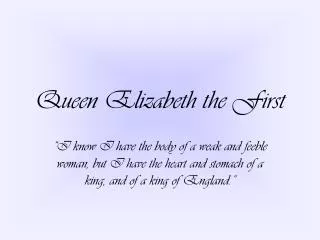
399 views • 10 slides

Queen Elizabeth I
Queen Elizabeth I. Dominique McBride, Sarah Creighton, Sabrina Clark, Anna Stolarski. Profile. Who: Queen Elizabeth I Parents: King Henry VIII & (2 nd ) wife Anne Boleyn Born: Sunday September 7, 1533 around 3PM at Greenwich Palace
561 views • 12 slides
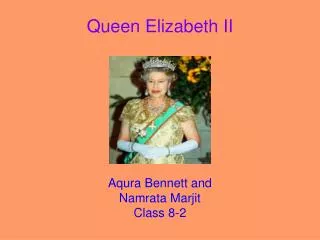
Queen Elizabeth II
Queen Elizabeth II. Aqura Bennett and Namrata Marjit Class 8-2. Queen Elizabeth’s early background?.
1.19k views • 5 slides

The Queen Elizabeth II
998 views • 60 slides
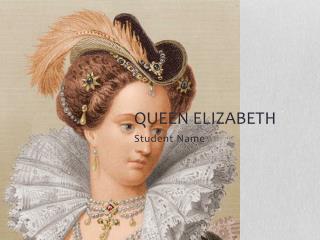
Queen Elizabeth
Queen Elizabeth. Student Name. Historical Question. Why was Queen Elizabeth important?. Thesis . Queen Elizabeth moved Europe into a Golden age by promoting the arts, encouraging trade in other countries, and being a kind and fair ruler. . Queen Elizabeth’s History.
1.2k views • 0 slides
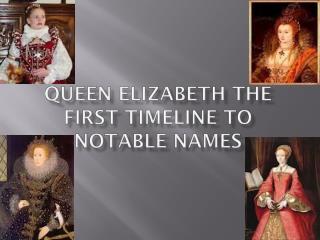
Queen Elizabeth the first timeline to Notable names
Queen Elizabeth the first timeline to Notable names. Getting to know Queen Elizabeth. Queen Elizabeth was born on 7 of september 1533. Her parents were Henry VIII and Anne Boleyn
356 views • 0 slides

Queen Elizabeth I.
Queen Elizabeth I. Queen Elizabeth I. Part 1: The childhood of Queen Elizabeth I. Part 2: Her services and events from 1559 to 1600 Part 3: Elizabeth & the Spanish Armada Part 4: Elizabeth & the political scene Part 5: The end of her life. Queen Elizabeth I. Part 1. Queen Elizabeth I.
1.1k views • 37 slides

Queen Elizabeth I . By: Jake Anselmo & Nate Hornyak. Life Of Queen Elizabeth. Born September 7, 1533 Born in the Palace of Placentia, Greenwich, located in England. Queen Elizabeth I became a queen on November 17, 1558. Died on March 24, 1603 Buried on April 28, 1603
1.78k views • 19 slides
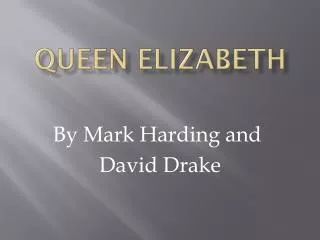
Queen Elizabeth. By Mark Harding and David Drake. Childhood. Queen Elizabeth was born on September 7 th , 1533 She was born at the Greenwich Palace Queen Elizabeth was named after her two grandmothers and there names are Elizabeth Howard, and Elizabeth of York .
785 views • 20 slides

Queen Elizabeth II. Queen of England. Her full name is Elizabeth Alexandra Mary born 21 April 1926 at 17 Bruton Street in Mayfair, London. The House of Windsor is the royal house of the Commonwealth realms. It’s the Queen’s Elizabeth Royal House. Ancestors of Elizabeth II.
4.03k views • 16 slides

Queen Elizabeth II
Queen Elizabeth II . 1926 Elizabeth is Born. 1947 Princess Elizabeth marries prince philip. 1953 the Coronation of Queen Elizabeth II. 1977 Queen Elizabeth silver jubilee. 2002 Queen Elizabeth golden jubilee. 2012 Queen Elizabeth diamond jubilee. The life of the Queen Elizabeth.
2.9k views • 3 slides

Queen Elizabeth. By: Bella Chenoweth. Life. Born on September 7,1533 In England Died on March 24, 1603. Dad and Mom. Dad: King Henry VIII. Mom: Queen Anne. Brother and sister. King Edward VI. Queen Mary I. Leadership. Ways she was a good leader.
616 views • 13 slides

Queen Elizabeth I. Kristin Saare G1B. Was born at Greenwich on 7. September 1533 English and Irish last Tudor monarh. She came to the throne at the age of 25 Coronation was on 15. january, 1559 Reigned from 1558-1603. She was the Queen of the UK and Ireland. Did you know?.
405 views • 9 slides

Queen Elizabeth II. The Queen’s early life. The Duke and Duchess of York with Princess Elizabeth. The Queen’s early life. The Queen’s early life. King Edward VIII abdication speech 1939. The Queen’s early life. Princess Elizabeth BBC Children's Hour Broadcast 1940. Education.
1.13k views • 22 slides

Queen Elizabeth I. 14-1. Background. I. Reign of Henry VIII A. 1509- Becomes King and marries Catherine of Aragon B. 1515- Catherine gives birth to Elizabeth’s sister Mary I C. 1533- Henry divorces Catherine and marries Anne Boleyn D. 1533- Elizabeth is born
398 views • 13 slides

Queen Elizabeth I. By Tyson Haeh. Birth.
255 views • 6 slides

Queen Elizabeth Park
Bill Livingstone built and designed Queen Elizabeth park. It is also called Little Mountain. Queen Elizabeth Park. King George the fourth and Queen Elizabeth, the Queen Mother, visited together in 1939. THE ROYAL VISIT. PLANTING. Queen Elizabeth planted her own English oak.
568 views • 7 slides

Queen Elizabeth. Student Name. Historical Question. Why was Queen Elizabeth important?. Thesis. Queen Elizabeth moved Europe into a Golden age by promoting the arts, encouraging trade in other countries, and being a kind and fair ruler. Queen Elizabeth’s History.
310 views • 14 slides
Biography of Queen Elizabeth I, Virgin Queen of England
George Gower/Getty Images
- European History Figures & Events
- Wars & Battles
- The Holocaust
- European Revolutions
- Industry and Agriculture History in Europe
- American History
- African American History
- African History
- Ancient History and Culture
- Asian History
- Latin American History
- Medieval & Renaissance History
- Military History
- The 20th Century
- Women's History
- M.A., Medieval Studies, Sheffield University
- B.A., Medieval Studies, Sheffield University
Elizabeth I (Born Princess Elizabeth; September 7, 1533–March 24, 1603) was Queen of England and Ireland from 1558 to 1603, the last of the Tudor monarchs . She never married and consciously styled herself as the Virgin Queen, wedded to the nation. Her reign was marked by immense growth for England, especially in world power and cultural influence.
Fast Facts: Queen Elizabeth I
- Known For : Queen of England from 1558–1603, known for defeating the Spanish Armada and encouraging cultural growth
- Also Known As : Princess Elizabeth, the Virgin Queen
- Born: September 7, 1533 in Greenwich, England
- Parents : King Henry VIII and Anne Boleyn
- Died : March 24, 1603 in Richmond, England
- Education : Educated by William Grindal and Roger Ascham, among others
- Published Works : Letters, speeches, and poems (collected in modern times in the volume, Elizabeth I: Collected Works
- Notable Quote : "I know I have the body of a weak and feeble woman, but I have the heart and stomach of a king and of a king of England too.”
On September 7, 1533, Anne Boleyn , then Queen of England, gave birth to the Princess Elizabeth. She was baptized three days later and was named after her paternal grandmother, Elizabeth of York . The princess's arrival was a bitter disappointment, as her parents had been certain that she would be a boy, the son Henry VIII so desperately wanted and had married Anne to have.
Elizabeth rarely saw her mother and before she was 3, Anne Boleyn was executed on trumped-up charges of adultery and treason. The marriage was declared invalid and Elizabeth was then declared illegitimate, as her half-sister, Mary , had been, and reduced to the title of "Lady" instead of "Princess."
Despite this, Elizabeth was educated under some of the most highly regarded educators of the time, including William Grindal and Roger Ascham. By the time she had reached her teens, Elizabeth knew Latin, Greek, French, and Italian. She was also a talented musician, able to play the spinet and lute. She even composed a little.
Restored to the Line of Succession
After Henry fathered a son, an act of Parliament in 1543 restored Mary and Elizabeth to the line of succession, though it did not restore their legitimacy. When Henry died in 1547, Edward, his only son, succeeded to the throne.
Elizabeth went to live with Henry’s widow, Catherine Parr . When Parr became pregnant in 1548, she sent Elizabeth away to set up her own household, following incidents of her husband, Thomas Seymour, apparently attempting to groom or seduce Elizabeth.
After Parr’s death in 1548, Seymour began scheming to achieve more power and secretly plotted to marry Elizabeth. After he was executed for treason, Elizabeth experienced her first brush with scandal and had to endure rigorous investigation. After the scandal passed, Elizabeth spent the rest of her brother’s reign living quietly and respectably,
A Focal Point for Discontent
Edward VI attempted to disinherit both his sisters, favoring his cousin Lady Jane Grey for the throne. However, he did so without the backing of Parliament and his will was patently illegal, as well as unpopular. After his death in 1533, Mary succeeded to the throne and Elizabeth joined her triumphant procession. Unfortunately, Elizabeth soon lost favor with her Catholic sister, likely due to English Protestants seeing her as an alternative to Mary.
Because Mary wed her Catholic cousin, Philip II of Spain , Thomas Wyatt (the son of one of Anne Boleyn's friends) led a rebellion, which Mary blamed on Elizabeth. She sent Elizabeth to the Tower of London, where criminals including Elizabeth's mother had awaited execution. With no evidence found against her, and Queen Mary’s husband viewing her as an asset for a political marriage, Elizabeth avoided execution and was released. Mary suffered a false pregnancy in 1555, leaving Elizabeth all but certain to inherit.
Elizabeth I Becomes Queen
Mary died on November 17, 1558, and Elizabeth inherited the throne, the third and final of Henry VIII’s children to do so. Her procession into London and coronation were masterpieces of political statement and planning, and her accession was treated warmly by many in England who hoped for greater religious toleration.
Elizabeth quickly assembled a Privy Council and promoted a number of key advisors: One, William Cecil (later Lord Burghley), was appointed principal secretary. Their partnership would prove to be fruitful and he remained in her service for 40 years.
The Marriage Question
One question that dogged Elizabeth, particularly in the early part of her reign, was the question of succession. Numerous times, the parliament presented her with official requests that she marry. Most of the English population hoped that marriage would solve the problem of a woman ruling.
Women were not believed to be capable of leading forces into battle. Their mental powers were considered to be inferior to men. Men often gave Elizabeth unsolicited advice, particularly in regards to the will of God, which only men were believed to be able to interpret.
Elizabeth I’s Image
Despite the frustration, Elizabeth governed with her head. She knew how to use courtship as a useful political tool, and she wielded it masterfully. Throughout her life, Elizabeth had a variety of suitors. The closest she came to marriage was likely with longtime friend Robert Dudley, but that hope ended when his first wife died mysteriously and Elizabeth had to distance herself from scandal. In the end, she refused to marry and also refused to name a political successor.
Elizabeth cultivated the image of herself as the Virgin Queen wedded to her kingdom, and her speeches made great use of romantic languages, such as "love," in defining her role. The campaign was entirely successful, maintaining Elizabeth as one of England’s best-loved monarchs.
Elizabeth’s reign marked a change from Mary’s Catholicism and a return to the policies of Henry VIII, whereby the English monarch was head of an English church. The Act of Supremacy in 1559 began a process of gradual reform, effectively creating the Church of England.
As part of her path of reform in the church, Elizabeth famously declared that she would tolerate all but the most radical sects . She demanded only outward obedience, unwilling to force consciences. This wasn’t enough for more extreme Protestants, and Elizabeth faced criticism from them.
Mary, Queen of Scots and Catholic Intrigue
Elizabeth’s decision to adopt Protestantism earned her condemnation from the pope, who gave permission for her subjects to disobey and even kill her. This inflamed numerous plots against Elizabeth’s life, a situation exacerbated by Mary, Queen of Scots . Mary Stuart, Elizabeth’s Catholic cousin, was the granddaughter of Henry’s sister and was seen by many to be a Catholic heir to the throne.
In 1568, Mary fled Scotland after her marriage to Lord Darnley ended in murder and a suspicious remarriage, and she begged for Elizabeth's help to be restored to power. Elizabeth didn’t want to return Mary to full power in Scotland, but she didn’t want the Scots to execute her, either. She kept Mary in confinement for 19 years, but her presence in England proved to be detrimental to the precarious religious balance within the country, as Catholics used her as a rallying point.
Mary was the focus of plots to kill Elizabeth during the 1580s. Although Elizabeth resisted calls to accuse and execute Mary at first, ultimately, she was persuaded by evidence that Mary had been party to the plots, not just an unwilling figurehead. Still, Elizabeth fought against signing the execution warrant until the bitter end, going so far as to encourage private assassination. After the execution, Elizabeth claimed that the warrant was dispatched against her wishes; whether that was true or not is unknown.
War and the Spanish Armada
England’s Protestant religion put it at odds with neighboring Catholic Spain and, to a lesser extent, France. Spain was involved in military plots against England and Elizabeth came under pressure from home to become involved with defending other Protestants on the continent, which on occasion she did.
The execution of Mary Stuart convinced Philip in Spain that it was time to conquer England and restore Catholicism within the country. Stuart’s execution also meant that he would not have to put an ally of France on the throne. In 1588, he launched the infamous Armada .
Elizabeth went to Tilbury Camp to encourage her troops, declaring:
“I know I have the body of a weak and feeble woman, but I have the heart and stomach of a king, and a king of England too, and think foul scorn that Parma or Spain, or any prince of Europe, should dare invade the borders of my realm…”
In the end, England defeated the Armada and Elizabeth was victorious. This would prove to be the climax of her reign: Only a year later, the same Armada all but destroyed the English Navy.
Ruler of the Golden Age
The years of Elizabeth’s rule are often referred to simply using her name—The Elizabethan Age. Such was her profound effect on the nation. The period is also called the Golden Age, for these years saw England rise to the status of world power thanks to voyages of exploration and economic expansion.
Toward the end of her reign, England experienced a blossoming literary culture. Edward Spenser and William Shakespeare were both supported by the queen and likely drew inspiration from their regal leader. Architecture, music, and painting also experienced a boom in popularity and innovation. The presence of her strong and balanced rule facilitated this. Elizabeth herself wrote and translated works.
Problems and Decline
The last 15 years of her reign were the hardest on Elizabeth, as her most trusted advisers died and younger courtiers struggled for power. Most infamously, a former favorite, the Earl of Essex, led a poorly-plotted rebellion against the queen in 1601. It failed miserably and he was executed.
Toward the very end of Elizabeth’s long reign, national problems began to grow. Consistently poor harvests and high inflation damaged both the economic situation and belief in the queen, as did anger at the alleged greed of court favorites.
Elizabeth held her final Parliament in 1601. In 1602 and 1603, she lost several dear friends, including her cousin Lady Knollys (granddaughter of Elizabeth's aunt Mary Boleyn ). Elizabeth experienced ever more depression, something she had experienced her entire life.
She declined notably in health and died on March 24, 1603. She was buried in Westminster Abbey in the same tomb as her sister Mary. She had never named an heir, but her cousin James VI, the Protestant son of Mary Stuart, succeeded to the throne and was likely her preferred successor.
Elizabeth has been remembered more for her successes than her failures and as a monarch that loved her people and was much loved in return. Elizabeth was always revered and seen as almost divine. Her unmarried status often led to comparisons of Elizabeth with the Roman goddess Diana, the Virgin Mary, and even a Vestal Virgin .
Elizabeth went out of her way to cultivate a wider public. In the early years of her reign, she often went out to the country on annual visits to aristocratic houses, showing herself to most of the public along the road in the country and townsfolk of southern England.
In poetry, she has been celebrated as an English embodiment of feminine strength associated with such mythic heroines as Judith, Esther, Diana, Astraea, Gloriana, and Minerva. In her personal writings, she showed wit and intelligence.
Throughout her reign, she proved to be a capable politician and she reigned for almost half a century. She consistently maintained her control on government, remaining cordial with parliament and ministers, but never allowing them to control her. Much of Elizabeth’s reign was a careful balancing act between both factions of her own court as well as with other nations.
Keenly aware of the increased burdens due to her gender, Elizabeth managed to construct a complex persona that awed and charmed her subjects. She portrayed herself very much as her father’s daughter, fierce if need be. Elizabeth was lavish in her presentation, part of her brilliantly orchestrated campaign to mold her image and retain power. She impresses people even today and her name has become synonymous with strong women.
- Collinson, Patrick. "Elizabeth I." Oxford Dictionary of National Biography . Oxford University Press, 2004.
- Dewald, Jonathan, and Wallace MacCaffrey. "Elizabeth I (England)." Europe 1450 to 1789: Encyclopedia of the Early Modern World . Charles Scribner's Sons, 2004.
- Kinney, Arthur F., David W. Swain, and Carol Levin. "Elizabeth I." Tudor England: an encyclopedia . Garland, 2001.
- Gilbert, Sandra M., and Susan Gubar. "Queen Elizabeth I." The Norton Anthology of Literature by Women: The Traditions in English . 3. ed. Norton, 2007.
- Biography of Mary, Queen of Scots
- Women Rulers of England and Great Britain
- Mary, Queen of Scots, in Pictures
- Women in the Tudor Dynasty
- Anne Boleyn
- Biography of Lady Jane Grey, the Nine Day Queen
- The Tudors: Introduction to a Royal Dynasty
- Queen Elizabeth I Quotes
- Margaret Douglas, Countess of Lennox
- A Profile of Henry VIII of England
- Biography of Elizabeth Woodville, Queen of England
- Famous Mothers and Daughters in History
- Biography of Catherine Parr, Sixth Wife of Henry VIII
- 1952: Princess Elizabeth Becomes Queen at 25
- Biography of Queen Victoria, Queen of England and Empress of India
Queen Elizabeth I
Elizabeth I was a long-ruling queen of England, governing with relative stability and prosperity for 44 years. The Elizabethan era is named for her.
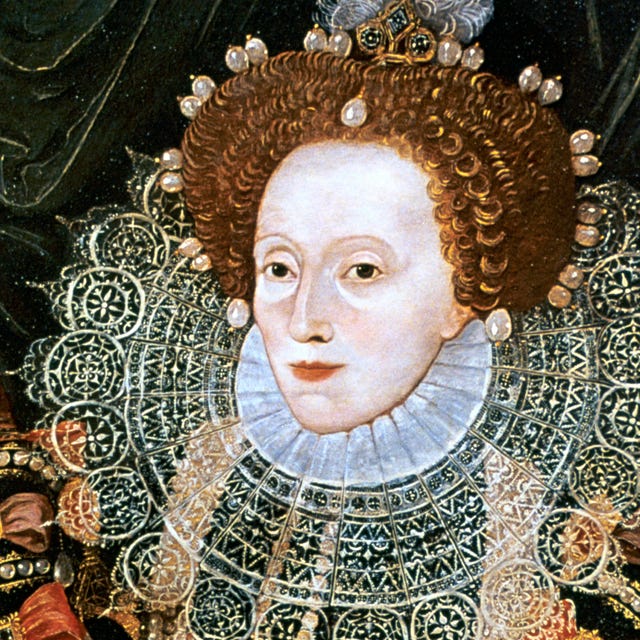
(1533-1603)
Who Was Queen Elizabeth I?
Queen Elizabeth I claimed the throne in 1558 at the age of 25 and held it until her death 44 years later. Elizabeth I was born a princess but declared illegitimate through political machinations. Eventually, upon her half-sister Mary Tudor’s death, she took the crown.
Queen Elizabeth I’s Father and Mother
Elizabeth was the daughter of King Henry VIII and his second wife, Anne Boleyn. She was only 2 years old when her mother was beheaded on the orders of her father, based on questionable charges of adultery and conspiracy.
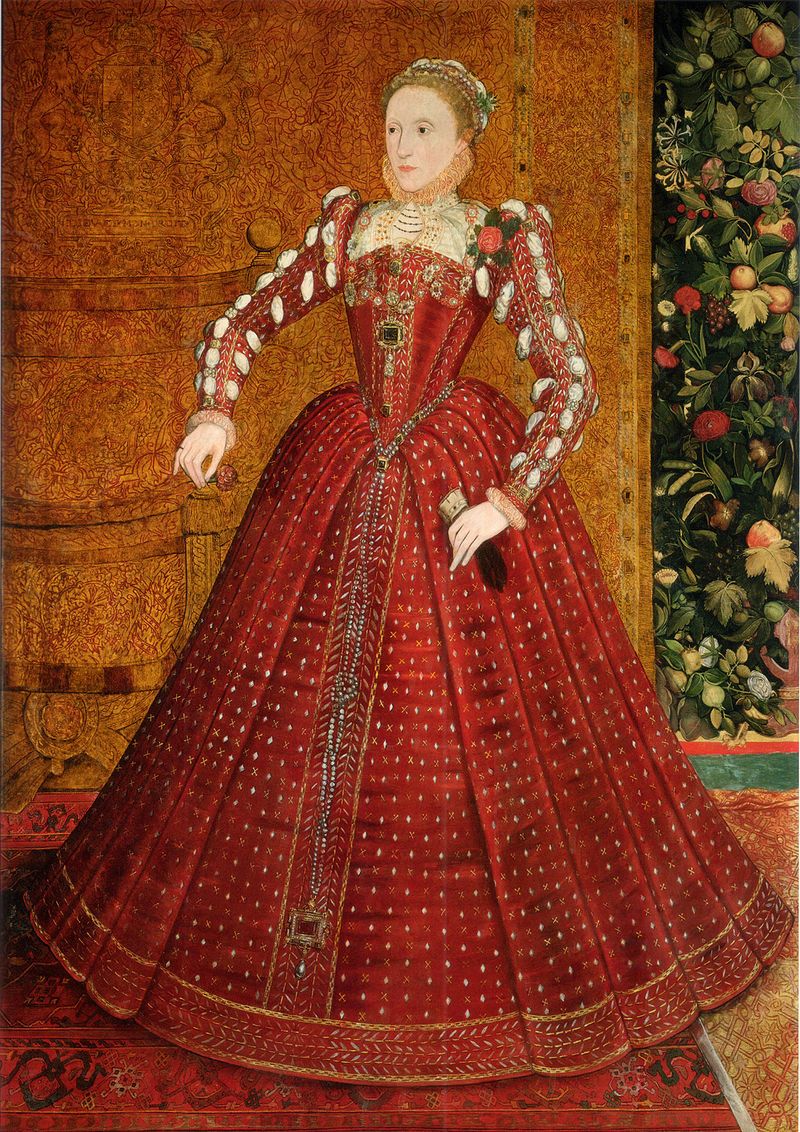
Early Life and Education
Elizabeth I was born on September 7, 1533, in Greenwich, England. Elizabeth was raised much like any other royal child. She received tutoring and excelled at languages and music.
After her father's death in 1547, Elizabeth spent some time under the care of her stepmother Catherine Parr. Parr hired tutors on Elizabeth's behalf, including William Grindal and Roger Ascham.
Tensions with Parr over Parr's new husband, Thomas Seymour, led Elizabeth to return to the royal estate at Hatfield, away from the court. Her relationship with Seymour later came under scrutiny, and Seymour was tried for conspiring to wed Elizabeth in a bid to gain power. Found guilty, Seymour was executed.
Elizabeth I of England’s Siblings
Elizabeth had an older half-sister, Mary Tudor , who was the king’s first child with his first wife, Catherine of Aragon, and the only to survive to adulthood. Elizabeth also had a younger half-brother, Edward, who was the king’s first and only legitimate son with his third wife, Jane Seymour .
Elizabeth and Mary were declared to be illegitimate as their father sought to pave the way to the throne for Edward, his male heir. The girls were later reinstated as potential heirs. Upon Henry VIII’s death in 1547, Edward succeeded his father as King Edward VI.
Edward VI died just six years later, in 1553. Mary Tudor and their cousin, Lady Jane Grey , both were in line for the crown.
Edward had appointed Grey to be his successor. Her reign proved to be very short: Mary gained the support of the English people and unseated Grey after only nine days on the throne.
Even though Elizabeth supported Mary in her coup, she was not free from suspicion. A staunch Roman Catholic, Mary sought to restore her country back to her faith, undoing her father's break from the Pope. While Elizabeth went along with the religious change, she remained a candidate for the throne for those who wanted a return to Protestantism.
In 1554, Thomas Wyatt organized a rebellion against Mary in the hopes of making Elizabeth queen and restoring Protestantism to England. His plot was uncovered, and Mary quickly imprisoned Elizabeth. Although Elizabeth disputed any involvement in the conspiracy, her sister was not wholly convinced.
Although she was soon released, Elizabeth's life was firmly in her sister's hands. Wyatt was executed, but he maintained that Elizabeth was not aware of the rebellion. Elizabeth eventually returned to Hatfield and continued with her studies. In 1558, Elizabeth ascended to the throne upon Mary Tudor’s death.
Elizabeth I’s Reign
Elizabeth ruled for 44 years, from 1558 until her death in 1603.
Elizabeth I inherited a number of problems stirred up by her half-sister Mary. The country was at war with France, which proved to be a tremendous drain on the royal coffers.
There was also great tension between different religious factions after Mary worked to restore England to Roman Catholicism by any means necessary. Mary had earned herself the nickname Bloody Mary for ordering the execution of 300 Protestants as heretics.
Elizabeth acted swiftly to address these two pressing issues. During her first session of Parliament in 1559, she called for the passage of the Act of Supremacy, which re-established the Church of England, and the Act of Uniformity, which created a common prayer book.
Elizabeth took a moderate approach to the divisive religious conflict in her country. "There is one Jesus Christ," she once said. "The rest is a dispute over trifles."
Historians differ on the extent that Catholics suffered religious persecution and execution under Elizabeth’s reign. The Roman Catholic Church took a dim view of her actions, and in 1570, Pope Pius V excommunicated Elizabeth.
With the assistance of her key advisor, William Cecil, Elizabeth ended England’s war with France. She was able to avoid clashing with the other superpower of the age, Spain, for much of her reign.
In 1585, however, Elizabeth entered the fray to support the Protestant rebellion against Spain in the Netherlands. Spain then set its sights on England, but the English navy was able to defeat the infamous Spanish Armada in 1588. According to several reports, the weather proved to be a deciding factor in England's victory.
Elizabethan England
Elizabeth’s reign was sometimes referred to as the England's Golden Age or Elizabethan England, an era of peace and prosperity when the arts had a chance to blossom with Elizabeth's support.
While she worked hard at court, Elizabeth took time for leisurely pursuits. She loved music and could play the lute. Thomas Tallis and William Byrd were among her court musicians. Elizabeth also enjoyed dancing and watching plays. Elizabeth's reign supported the creation of works by such greats as William Shakespeare and Christopher Marlowe .
Writers paid tribute to the queen in many literary forms. The poet Edmund Spenser based his character of Gloriana in The Faerie Queen on Elizabeth, and she was sometimes referred to by this name.
Portraiture was the reigning form of painting at the time, and artists honored Elizabeth by painting her portrait. These images reveal that Elizabeth was an early fashionista in many ways. She loved jewelry and beautiful clothing; her garments were often made with gold and silver. With the help of makeup, Elizabeth cultivated a dramatically pale look.
Rivalry Between Queen Elizabeth I and Mary, Queen of Scots
During Elizabeth’s rule, Mary, Queen of Scots lay claim to the English crown and posed one of the greatest internal threats to remove her cousin from the throne. Mary was raised Catholic and was considered by many English Catholics to be the rightful monarch of England.
The daughter of King James V of Scotland, Mary Stuart united her country with France in 1558 when she married the future King Francis II. After Francis' death, Mary returned to Scotland in 1561.
Elizabeth jailed her cousin in 1567 in connection with several assassination attempts, including the Babington Plot. Elizabeth kept Mary imprisoned for nearly 20 years before she had her cousin executed in 1587.
DOWNLOAD BIOGRAPHY'S QUEEN ELIZABETH I FACT CARD

Later Years
Troubled times marked the final years of Elizabeth's reign. The country suffered from failed crops, unemployment and inflation. There were riots over food shortages and rebellions in Ireland.
Elizabeth faced many challenges to her authority, including from one of her favorite noblemen, Robert Devereaux, the Earl of Essex. She had sent him to Ireland to quell a rebellion known as the Nine Years War led by Gaelic lord Hugh O'Neill. Instead, Essex returned to England and sought to start his own rebellion. He was executed for treason in 1601.
Elizabeth I’s Golden Speech
Despite her fading power, Elizabeth still showed her devotion to her people. She gave one of her most famous speeches in 1601 to Parliament.
During what is referred to as her "Golden Speech," a self-reflective Elizabeth seemed to look back on her long reign. "Of myself I must say this, I was never any greedy, scraping grasper, nor a strait, fast-holding prince, nor yet a waster. My heart was never set on worldly goods but for my subjects' good."
While the end of her reign had been difficult, Elizabeth is largely remembered as a queen who supported her people. Her lengthy time on the throne provided her subjects with stability and consistency. Her political acumen, sharp wit and clever mind helped navigate the nation through many religious, social and governmental challenges.
Did Queen Elizabeth I Have a Husband or Children?
Elizabeth never married or had children; she seemed to have no interest in sharing power with a spouse. Over time, she cultivated her image as a queen married to her job and her people, earning her the nickname the "Virgin Queen."
Succession was a pressing issue for Elizabeth. During her reign, she managed a number of suitors and potential royal matches. Through her father and her sister, however, Elizabeth had seen the troubles and challenges of royal marriages.
Elizabeth's half-sister Mary Tudor had made an unpopular choice in marrying Philip II of Spain, who shared her devotion to the Roman Catholic faith. In the hopes of reuniting their two countries once more, Phillip offered to wed Elizabeth at one time. She refused.
Other suitors for Elizabeth's hand included the Archduke Charles of Austria and the future King Henry III of France. She used her availability as a means to political ends, but she never agreed to marriage.
Elizabeth herself seemed to have some interest in a member of her court, Robert Dudley. Their relationship was the subject of much gossip and speculation; both parties came under suspicion of the mysterious death of Dudley's wife.
Queen Elizabeth I’s Death
Elizabeth died on March 24, 1603, at Richmond Palace in Surrey. It’s believed that the cosmetic concoction Elizabeth used to cultivate her infamously pale look, called the "spirits of Saturn" — made by mixing white lead and vinegar — may have impacted her health.
Successor to Queen Elizabeth I
Because Elizabeth I had no children, with her death came the end of the house of Tudor — a royal family that had ruled England since the late 1400s. The son of her former rival and cousin, Mary, Queen of Scots, succeeded her on the throne as James I.
"],["
Anne Boleyn
Mary, Queen of Scots
"]]" tml-render-layout="inline">
QUICK FACTS
- Name: Elizabeth
- Birth Year: 1533
- Birth date: September 7, 1533
- Birth City: Greenwich
- Birth Country: United Kingdom
- Gender: Female
- Best Known For: Elizabeth I was a long-ruling queen of England, governing with relative stability and prosperity for 44 years. The Elizabethan era is named for her.
- World Politics
- Astrological Sign: Virgo
- Interesting Facts
- Elizabeth I was called the Virgin Queen because of her refusal to marry.
- It’s believed that the cosmetic concoction Elizabeth used to cultivate her infamously pale look may have impacted her health and contributed to her death.
- Death Year: 1603
- Death date: March 24, 1603
- Death City: Richmond, Surrey
- Death Country: United Kingdom
We strive for accuracy and fairness.If you see something that doesn't look right, contact us !
CITATION INFORMATION
- Article Title: Queen Elizabeth I Biography
- Author: Biography.com Editors
- Website Name: The Biography.com website
- Url: https://www.biography.com/royalty/queen-elizabeth-i
- Access Date:
- Publisher: A&E; Television Networks
- Last Updated: February 7, 2020
- Original Published Date: April 3, 2014
- I know I have the body of a weak and feeble woman, but I have the heart and stomach of a king, and of a king of England too.
- I would rather be a beggar and single than a queen and married.
- I do not so much rejoice that God hath made me to be a Queen, as to be a Queen over so thankful a people.
Famous British People

William Shakespeare

Anya Taylor-Joy

Kate Middleton, Princess of Wales

Kensington Palace Shares an Update on Kate

Amy Winehouse

Prince William

Where in the World Is Kate Middleton?

Christopher Nolan

Emily Blunt

Jane Goodall

Princess Kate Is Seen for First Time Since Surgery

- My presentations
Auth with social network:
Download presentation
We think you have liked this presentation. If you wish to download it, please recommend it to your friends in any social system. Share buttons are a little bit lower. Thank you!
Presentation is loading. Please wait.
Queen Elizabeth I..
Published by Kathleen Hart Modified over 8 years ago
Similar presentations
Presentation on theme: "Queen Elizabeth I.."— Presentation transcript:
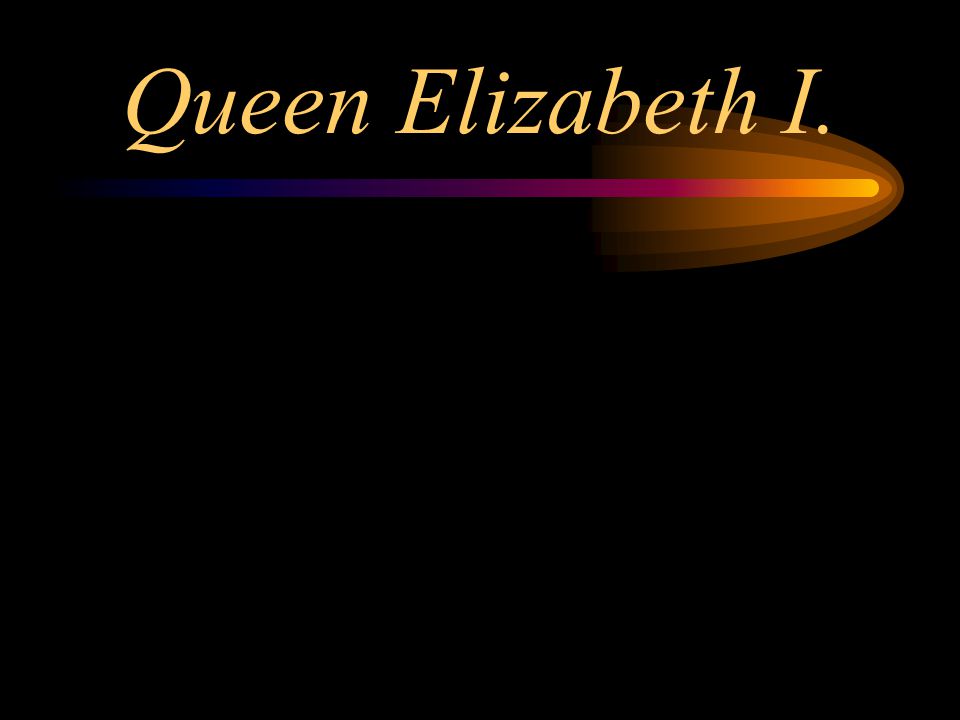
The Tudors Why were they important? Who were they? Henry VIII

Henry VIII and his 6 Wives

KINGS AND QUEENS OF BRITAIN

English Renaissance History

THE TUDORS -enter name here-. -THE TUDORS WERE ENGLISH RULERS WHO REIGNED ENGLAND FROM 1458 TO They were very powerful and are known to have had.

Tudor England. The Tudors Henry VII (Henry Tudor) won the War of the Roses Henry VIII, son of Henry VII –Sought male heir to throne –Broke Church of England.

The English Renaissance and William Shakespeare How The Great Bard Was Born.

THE PROTESTANT REFORMATION Part II: Reformation Ideas Spread.

Henry VII ( ) Henry VIII ( ) Edward VI ( ) Mery I ( ) Elizabeth I ( )

England Becomes Protestant Unit 1: The Renaissance and Reformation ( )

Henry VIII Aim/Goals: Why did Henry VIII form the Church of England? Do Now: When it comes time for you to become parents, which would you prefer— a boy.

Elizabeth 1 What Was Elizabeth I Good At? Elizabeth was very good at horse riding. In Tudor times it was fashionable to ride side saddle and here is.

HOW DID THE LANGUAGE OF THE UNITED STATES OF AMERICA BECAME ENGLISH?

The greatest monarchs of Britain. King Henry VIII ( ) Henry VIII was one of the most famous English kings. In 1509 he became king at the ago of.

Unit 7: Why did Henry VIII marry six times?. History Unit 7: Why did Henry VIII marry six times? Why did Henry VIII marry six times?

Chapter 1 Part II~ The Renaissance Pages in text.

The English Reformation & The Reign of the Tudors.

Lesson 10 Henry VIII (DAD). Henry VIII (DAD Learning Target Students can explain the importance of Henry VIII in the Reformation and list the basic reforms.

Queen Elizabeth I Queen of England Born September 7, 1533 – Died March 24, 1603.

THE REFORMATION IN ENGLAND

About project
© 2024 SlidePlayer.com Inc. All rights reserved.
Website navigation
Queen elizabeth i, about elizabeth tudor.
Queen Elizabeth I ruled England during most of Shakespeare’s lifetime. She was born on September 7, 1533, in Greenwich, and she died on March 24, 1603, in Richmond, Surrey, after 45 years as queen.
The daughter of Henry VIII and Anne Boleyn, Elizabeth received the education of a prince. She knew five languages and was a talented musician, dancer, and horsewoman.
Becoming queen
The dangers that surrounded Elizabeth during the reign of her Catholic sister Mary only served to make her politically savvy at an early age. When Mary died in November 1558, Elizabeth was prepared to take on the responsibility of the throne at the age of 25. She was crowned in January 1559.
Victory over the Spanish Armada
During her reign, England defeated the Spanish Armada. Because the Spanish navy was considered superior to the British navy, this victory raised the status of England in Europe.
“The Virgin Queen”
Queen Elizabeth I never married. She is sometimes called “The Virgin Queen.”
Elizabeth I "Sieve" Portrait
Why is Elizabeth painted with a sieve in her left hand?
More portraits of Elizabeth I in the Folger collection:

Elizabeth I and Shakespeare
When Shakespeare was born in 1564, Elizabeth had been Queen of England for just 5 years. While most of his plays were written after her death, we do know she saw a few of Shakespeare’s plays and that he performed at Court.
The Merry Wives of Windsor
For instance, we know she saw The Merry Wives of Windsor performed thanks to a published copy of the play proclaiming: “As it hath been divers times Acted by the right Honorable my Lord Chamberlaines servants. Both before her Majestie, and else-where.” The Lord Chamberlain’s Servants was Shakespeare’s acting troupe and Elizabeth is referenced by her title of “Majestie.”
Love’s Labor’s Lost
Similarly, we know that Elizabeth saw a performance of Love’s Labor’s Lost because of the play’s title page stating: “A pleasant conceited comedie called, Loues labors lost. As it vvas presented before her Highness this last Christmas. Newly corrected and augmented by W. Shakespeare.”

Continue exploring the Folger collection:
Leicester’s letter to elizabeth i.
This letter to Queen Elizabeth I was written by Robert Dudley, the Earl of Leicester and her one-time suitor.
Elizabeth I’s Letter to Henry IV
Most letters between monarchs were hand-written by a court official, but Elizabeth wrote this one herself.
Stay connected
Find out what’s on, read our latest stories, and learn how you can get involved.

- DIGITAL MAGAZINE
MOST POPULAR
The life and reign of Queen Elizabeth I
Learn about the life of england’s last tudor queen….
Meet one of the most powerful women in British and Tudor history in our Elizabeth I facts!
Elizabeth I facts
Who was elizabeth i.
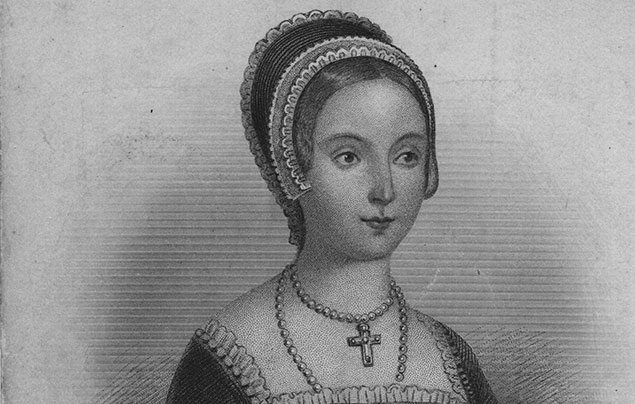
Elizabeth as a young Princess.
Elizabeth I was Queen of England and Ireland from 17th November 1558 to 24th March 1603. She’s regarded as one of the greatest monarchs of England.
Born 7th September 1533 , Elizabeth was the daughter of Henry VIII and his second wife, Anne Boleyn . Henry already had a daughter, Mary – Elizabeth’s half-sister – with his first wife Catherine of Aragon .
Elizabeth had a pretty tough upbringing. When she was just two years old, her father had her mother beheaded – yikes! – and Elizabeth removed from the line of succession (her right to inherit the throne). She also had her title downgraded from ‘Princess’ to ‘Lady’. Aww, poor little thing…
Following her mother’s execution, Elizabeth was neglected by her father. Why? Henry was desperate for a male heir to succeed him.
Did you know that we have a FREE downloadable Queen Elizabeth I primary resource ? Great for teachers, homeschoolers and parents alike!
It wasn’t until Henry married his sixth wife, Catherine Parr , that Elizabeth was welcomed back into the family. Catherine felt it was important for father and daughter to be reunited, and insured that Elizabeth received a good education, including learning the art of public speaking – a skill that would prove very useful to her in future!
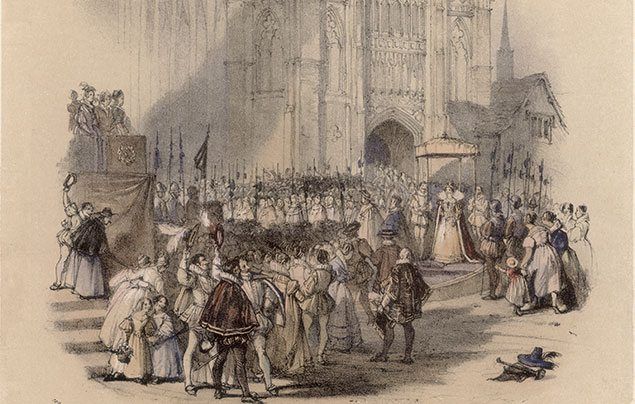
Elizabeth’s coronation procession outside Westminster Abbey in 1559.
It would still be many years, however, until Elizabeth would sit on the throne. When Henry VIII died, he left his nine-year-old son, King Edward VI , to rule England – quite a big job for a little boy! But after Edward’s untimely death, Henry’s eldest daughter, Mary I , reigned until she died in 1558 .
Finally, it was Elizabeth’s turn. The third of Henry’s children to inherit the throne, she was to reign for much longer than her half-brother and half-sister.
Her coronation on 15th January 1559 was an impressive, expensive celebration. Elizabeth gladly received flowers and congratulations from ordinary people in the street – just like our queen does today. A carpet was laid down for Elizabeth to walk on to Westminster Abbey , and people cut out pieces as mementos of the day.
What was Elizabeth I like?

Elizabeth I in her coronation robes.
Elizabeth proved to be a very different ruler to her older half-sister, Mary, who had dealt out harsh punishments to those who disagreed with her attempts to restore England to Catholicism (the Roman Catholic faith) – earning her the nickname ‘Bloody Mary’.
During Elizabeth’s reign, she sought to return the country from Catholicism to Protestantism (another form of the Christian religion), like her father had done before her. But t hankfully , Elizabeth proved to be a more tolerant ruler than Mary and tried to make England a fairer place for everyone.
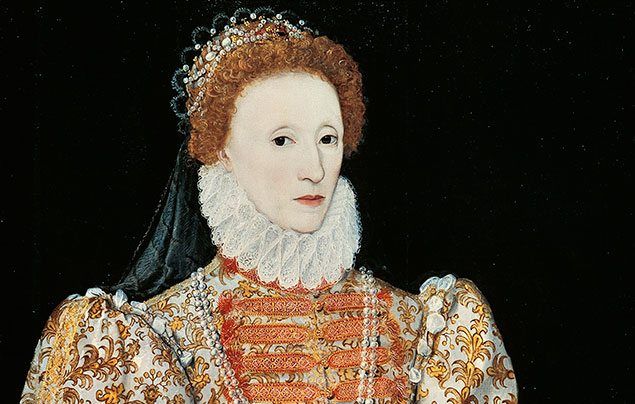
Elizabeth was a very clever, quick-witted ruler and is famed for her great skills of persuasion. She rarely failed to get her own way, and surrounded herself with carefully-chosen ministers who would help her rule. But Elizabeth also had a reputation for leaving important decisions to the very last minute – much to the annoyance of her ministers!
Many people in the 16th century believed that a woman wasn’t fit to rule, but Elizabeth was quick to prove them wrong! She could be as cunning and ruthless a leader as any king who came before her, and she was a strong, formidable leader. Elizabeth did, however, have a weakness for flattery and she could be extremely vain – every portrait was carefully inspected to make sure she looked her absolute best!
Why did Elizabeth I never marry?
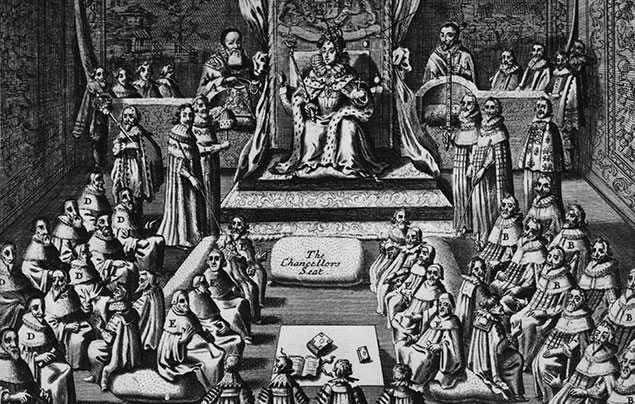
Elizabeth I sits on her throne in Parliament.
Over the years of Elizabeth’s rule, she was often encouraged to marry. Her advisors thought she needed a husband to support her and an heir to succeed her .
In 1566 , Parliament even tried to force Elizabeth’s hand by refusing to give her any more money until she married. Elizabeth refused to back down, saying, “I am already bound unto a husband which is the Kingdom of England”. The issue was never raised again!
The Queen felt strongly about her reasons not to marry. If she married a foreign prince to create a link with another European country, it may have benefitted the other country more than England and made her less powerful . If she married an Englishman, it may have caused conflict between her ministers and advisors.
Despite her feelings, she was not short of offers! Many men proposed but Elizabeth always kept them waiting. This meant she could get the support she needed from them and keep them loyal, too!
Elizabeth I and Mary, Queen of Scots
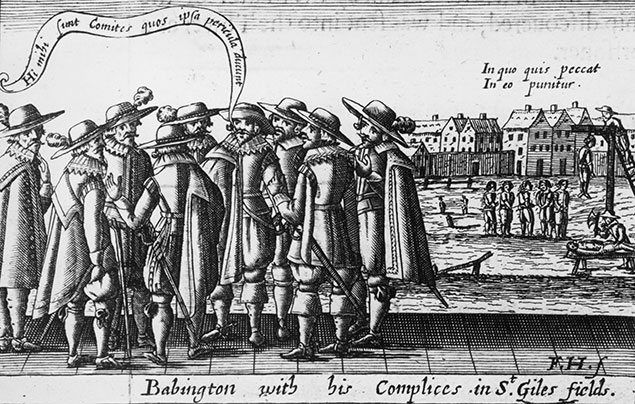
The ‘Babington Plot’ sought to overthrow Queen Elizabeth and place Mary, Queen of Scots on the throne.
Mary and Elizabeth, first cousins and Queens of their respective countries, had a rocky relationship that dominated English-Scottish politics for 20 years.
Mary was the granddaughter of Margaret , the older sister of Henry VIII. She was the Queen of Scotland from 1543 until 1567 , when she became very unpopular and was forced to abdicate (give up the throne). The next year she came to England, hoping to be welcomed by Elizabeth. But instead, she received a rather frosty reception, to say the least…
Mary was a Catholic, and many Catholics thought she should be Queen of England. Elizabeth, aware that she could be a threat to her throne, kept Mary prisoner for 19 years .
Many advisors encouraged Elizabeth to execute Mary, Queen of Scots, to prevent any uprisings and rebellions from people who wanted Mary on the English throne. Elizabeth refused for many years. Not only was Mary family but she was a fellow queen, and the last thing Elizabeth wanted was to encourage the execution of monarchs!
However, things changed when Francis Walsingham – one of Elizabeth’s most important ministers – uncovered a plot to overthrow Elizabeth in 1686 . Walsingham’s spies discovered that Mary was sending messages to Catholic plotters. Using some clever tactics, they intercepted one of the letters and faked Mary’s handwriting at the end of it, asking for the identities of the plotters. Sneaky!
Elizabeth could no longer put off Mary’s execution. She was found guilty of treason and beheaded in 1587 .
The Spanish Armada
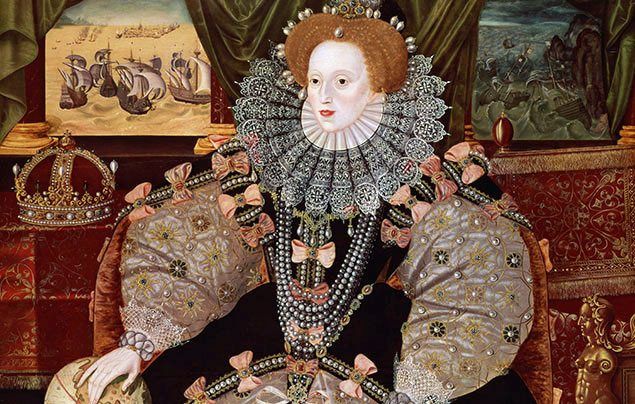
The Armada Portrait, which Elizabeth I had painted after her victory over the Spanish. The wrecked Spanish fleet can be seen in the window behind her.
Mary’s execution angered Catholics in Europe. The Pope encouraged King Philip II of Spain to invade England, remove Elizabeth and make the country Catholic again.
In 1588 , Philip sent a fleet of 130 ships, known as the Spanish Armada , to England. The English fleet met the Armada in the English Channel, and sent burning ships into the midst of the Spanish ships, forcing them to split up and scatter. The Spanish retreated, intending to sail around the British Isles and back to Spain. But a terrible storm wrecked many of the ships off Scotland and Ireland – a storm that King Philip II would later refer to as the ‘ Protestant wind ‘.
This was a great triumph for Elizabeth – she even commissioned a portrait of her celebrating the victory (above). The English believed that this showed that God approved of the Queen. However, the war against Spain was far from over, and would last for another 19 years.
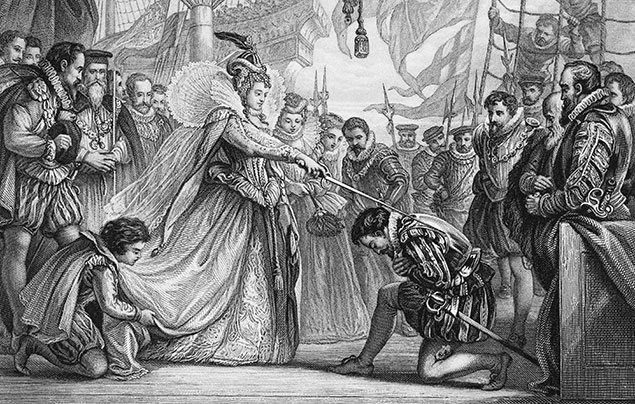
Elizabeth I knights the explorer Sir Francis Drake.
Elizabeth’s reign is looked back on as a ‘ Golden Age ‘ in British history. It was a time of great exploration by men such as Sir Francis Drake and Sir Walter Raleigh , who discovered new lands and set up new colonies overseas. Poetry, music and literature flourished, and London opened its first theatres. Playwrights such as William Shakespeare were hugely popular, especially with the Queen, who attended the first performance of Shakespeare’s ‘ A Midsummer Night’s Dream ’.
In 1601, near the end of her reign, Elizabeth gave what is known as the ‘ Golden Speech ‘ to her politicians. In it she expressed her love for her country and subjects, and said, “ There is no jewel, be it of never so high a price, which I set before this jewel; I mean your love .”
Who succeeded Elizabeth I?
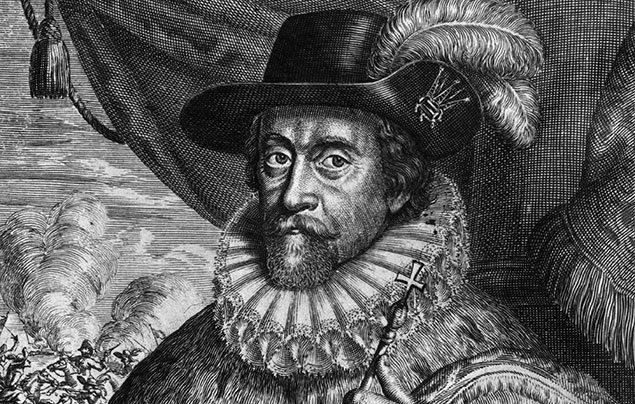
King James VI of Scotland.
By the early 1600s, Elizabeth’s health had been failing for some time. Frail and melancholy over the deaths of many of her close friends and advisors, she would stand for hours, refusing to rest. She was balding, had bad breath due to her rotting teeth – eww ! – and spent a lot of her time expressing regret over decisions she’d made during her reign – especially the execution of Mary, Queen of Scots.
On 24th March 1603 Elizabeth I died, having reigned for 44 years as a very popular queen. As she had no children, and therefore no direct heir to the throne, she was the last Tudor monarch . Following her death, Mary, Queen of Scots’ son – James VI of Scotland – was named King James I of England .
The cause of her death was never determined. But whilst no theory has been proven, many people think Elizabeth may have had blood poisoning from the make-up she wore. Make-up in the Tudor era was full of toxic ingredients such as lead – and Elizabeth famously wore a lot of it!
What is Elizabeth I remembered for?

Elizabeth is often remembered as a powerful and clever monarch, known for her sumptuous costumes, sparkling jewellery, beautiful appearance and magnificent portraits. She reigned England at a time when religious opinion was divided, yet, for the most part, she managed to maintain peace and prosperity, and reign over a ‘Golden Age’.
She’s also remembered for being a different kind of queen. She was only the second queen in English history to rule in her own right (the first was her half-sister, Mary) – during a time when people believed that women weren’t able to rule as well as men. But Elizabeth didn’t let that stop her! She was clever and cunning and proved that women can be just as powerful as men!
Her refusal to marry lead to her being remembered as the ‘ Virgin Queen .’ She knew that marriage would mean sharing power with her husband, and even becoming the less powerful of the two. There were rumours of Elizabeth having relationships with men at court, but none were ever proven true – making her even more of a mystery!
Lastly, she is arguably the most famous child of Henry VIII. Desperate for a male heir, Henry disowned Elizabeth as a child and beheaded her mother – and in the process, hugely underestimated his daughter’s potential to become one of the most influential queens in British history.
What do you think of our Elizabeth I facts? Let us know by leaving a comment, below!
Leave a comment.
Your comment will be checked and approved shortly.
WELL DONE, YOUR COMMENT HAS BEEN ADDED!
This text about queen Elizabeth was amazing now I know a lot more facts.
HiyaaaAaaaaaaaa
Cool stuff :)
I like your facts about Elizabeth the first.
[…] today’s History lesson I have made a quiz on kahoot! You need to read this page all about Queen Elizabeth’s life, and then answer the quiz questions on kahoot! using this […]
lol so good
CUSTOMIZE YOUR AVATAR
More like monarchy.

15 fun facts about Queen Elizabeth II
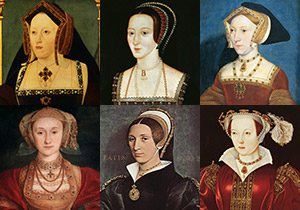
The six wives of King Henry VIII
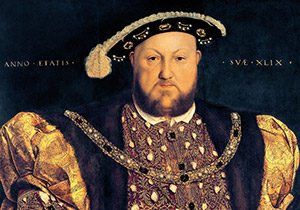
The life and reign of King Henry VIII

Queen Victoria’s children

Sign up to our newsletter
Get uplifting news, exclusive offers, inspiring stories and activities to help you and your family explore and learn delivered straight to your inbox.
You will receive our UK newsletter. Change region
WHERE DO YOU LIVE?
COUNTRY * Australia Ireland New Zealand United Kingdom Other
By entering your email address you agree to our Terms of Use and Privacy Policy and will receive emails from us about news, offers, activities and partner offers.
LESSON PLAN FOR ENGLISH TEACHERS
Queen elizabeth the first.

Level: Intermediate (B1-B2)
Type of English: General English
Tags: Celebrities and historical figures people and places royalty past perfect past tenses 16-18 years old 18+ years old
Publication date: 09/09/2022
This audio-aided lesson tells the life story of Queen Elizabeth the First (1533-1603). The lesson focuses on vocabulary, listening comprehension, and speaking and includes a short look at the significance of word order in the past perfect ( had done something ) and the past causative have ( had something done ). There is also a brief optional extension activity which provides the opportunity to discuss formality and how language changes using the example of thou, thee, thy and thine pronouns in the Elizabethan era.
by Stephanie Hirschman
Queen Elizabeth the First_be.mp3
Be the first to share your thoughts on this lesson
Leave a Comment
Student worksheet
Teacher lesson plan
Download audio
Save lesson to
This audio-aided lesson tells the life story of Queen Elizabeth the First (1533-1603). The lesson focuses on vocabulary, listening comprehension, and speaking and includes a short look at the significance of word order in the past perfect (had done something) and the past causative have (had something done). There is also a brief optional extension activity which provides the opportunity to discuss formality and how language changes using the example of thou, thee, thy and thine pronouns in the Elizabethan era.
Queen Elizabeth the First_ae.mp3
COURSE PLANS
This comprehensive course plan covers the full range of language needs – listening, role play, vocabulary development.
Worksheets in Biographies course plan
Type of English: General English Level: Intermediate (B1-B2)
Make your lessons unforgettable
Did you know that your students can review the target language from our worksheets with our Expemo flashcard app? To let your student know, just enter their email address below (multiple emails can be separated with a comma).
- History Classics
- Your Profile
- Find History on Facebook (Opens in a new window)
- Find History on Twitter (Opens in a new window)
- Find History on YouTube (Opens in a new window)
- Find History on Instagram (Opens in a new window)
- Find History on TikTok (Opens in a new window)
- This Day In History
- History Podcasts
- History Vault
This Day In History : January 15
Changing the day will navigate the page to that given day in history. You can navigate days by using left and right arrows
Elizabeth I crowned Queen of England

Two months after the death of her half-sister, Queen Mary I of England, Elizabeth Tudor, the 25-year-old daughter of Henry VIII and Anne Boleyn, is crowned Queen Elizabeth I at Westminster Abbey in London.
The two half-sisters, both daughters of Henry VIII, had a stormy relationship during Mary’s five-year reign. Mary, who was brought up as a Catholic, enacted pro-Catholic legislation and made efforts to restore papal supremacy in England. A Protestant rebellion ensued, and Queen Mary imprisoned Elizabeth, a Protestant, in the Tower of London on suspicion of complicity. After Mary’s death, Elizabeth survived several Catholic plots against her; although her ascension was greeted with approval by most of England’s lords, who were largely Protestant and hoped for greater religious tolerance under a Protestant queen. Under the early guidance of Secretary of State Sir William Cecil, Elizabeth repealed Mary’s pro-Catholic legislation, established a permanent Protestant Church of England , and encouraged the Calvinist reformers in Scotland.
In foreign affairs, Elizabeth practiced a policy of strengthening England’s Protestant allies and dividing her foes. Elizabeth was opposed by the pope, who refused to recognize her legitimacy, and by Spain, a Catholic nation that was at the height of its power. In 1588, English-Spanish rivalry led to an abortive Spanish invasion of England in which the Spanish Armada, the greatest naval force in the world at the time, was destroyed by storms and a persistent English navy.
With increasing English domination at sea, Elizabeth encouraged voyages of discovery, such as Sir Francis Drake’s circumnavigation of the world and Sir Walter Raleigh’s expeditions to the North American coast.
The long reign of Elizabeth, who became known as the “Virgin Queen” for her reluctance to endanger her authority through marriage, coincided with the flowering of the English Renaissance, associated with such renowned authors as William Shakespeare . By her death in 1603, England had become a major world power in every respect, and Queen Elizabeth I passed into history as one of England’s greatest monarchs.
Also on This Day in History January | 15
Wikipedia launches.
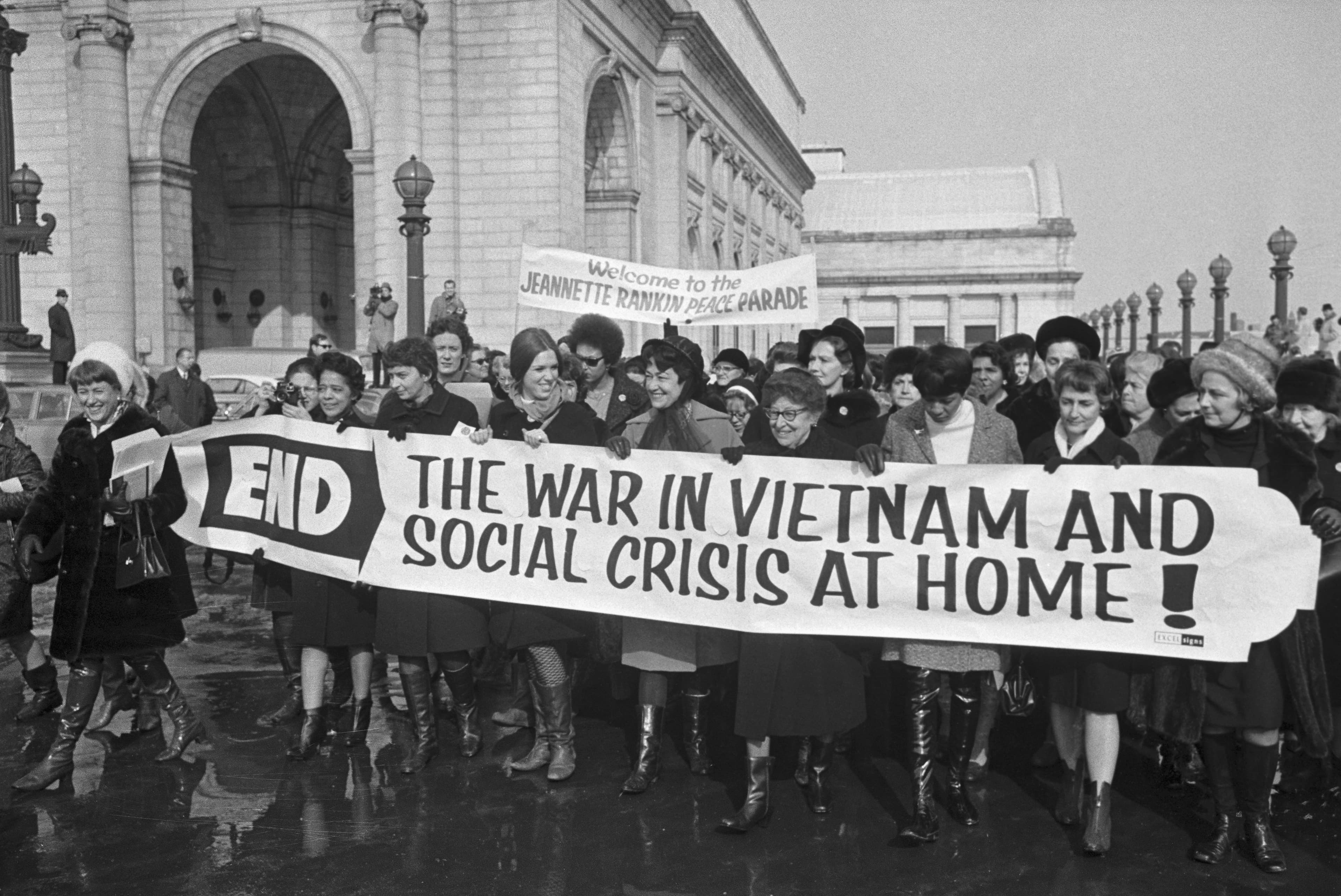
The Jeannette Rankin Brigade: 5,000 women march against Vietnam War

This Day in History Video: What Happened on January 15

Pilot Sully Sullenberger performs “Miracle on the Hudson”
“american pie” hits #1 on the pop charts, vermont declares independence from colony of new york.

Wake Up to This Day in History
Sign up now to learn about This Day in History straight from your inbox. Get all of today's events in just one email featuring a range of topics.
By submitting your information, you agree to receive emails from HISTORY and A+E Networks. You can opt out at any time. You must be 16 years or older and a resident of the United States.
More details : Privacy Notice | Terms of Use | Contact Us
First appearance of the Democratic Party donkey
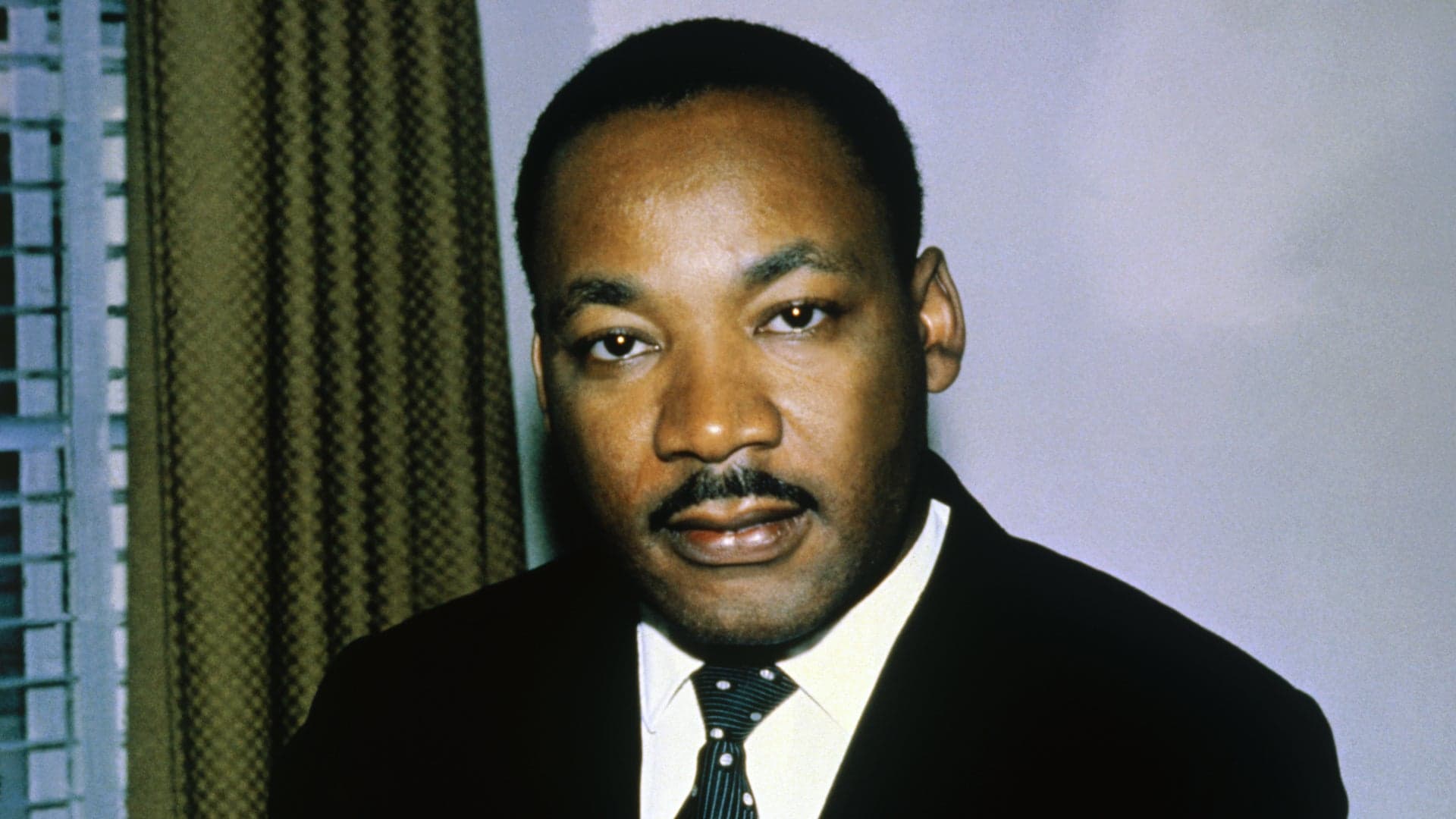
Martin Luther King Jr. born
Rebel leaders are murdered in failed coup in berlin, packers beat chiefs in first super bowl, “the hunchback of notre dame” is finished, boston shocked by deadly molasses flood, “hill street blues” begins run, soviets send troops into azerbaijan, the “witch of buchenwald” is sentenced to prison.
If you're seeing this message, it means we're having trouble loading external resources on our website.
If you're behind a web filter, please make sure that the domains *.kastatic.org and *.kasandbox.org are unblocked.
To log in and use all the features of Khan Academy, please enable JavaScript in your browser.
AP®︎/College Art History
Course: ap®︎/college art history > unit 11, presentation of fijian mats and tapa cloths to queen elizabeth ii.
- Mask (Buk), Torres Strait, Mabuiag Island
A procession for a royal visit
The queen's itinerary, want to join the conversation.
- Upvote Button navigates to signup page
- Downvote Button navigates to signup page
- Flag Button navigates to signup page

IMAGES
COMMENTS
Queen Elizabeth the First. Queen Elizabeth the First. "I know I have the body of a weak and feeble woman, but I have the heart and stomach of a king, and of a king of England.". A leader is…. Determined Intelligent Unwavering in values Courageous Good judgment Open-minded Unselfish. The Life of Queen Elizabeth I. 399 views • 10 slides
Elizabeth I (born September 7, 1533, Greenwich, near London, England—died March 24, 1603, Richmond, Surrey) queen of England (1558-1603) during a period, often called the Elizabethan Age, when England asserted itself vigorously as a major European power in politics, commerce, and the arts. Although her small kingdom was threatened by grave ...
3 Elizabeth I Introduction: Elizabeth Tudor was 25 when she became Queen in 1558 Was the third of Henry VIII's children to rule England She had a temper and robust nature "More than a man and sometimes less than a woman" Athletic and had a lot of energy and could be crude
Elizabeth I: Presentations of Power ... Queen Elizabeth I was the last monarch of the Tudor dynasty, which ruled England between 1485 and 1603. ... She promised in her first speech as Queen to rule, 'by good advice and counsel'. In 1559, the 'Elizabethan Settlement' offered a religious compromise, re-establishing the monarch's supremacy ...
Early Life. Elizabeth was born 7 September 1533 at Greenwich Palace, the daughter of Henry VIII of England (r. 1509-1547) and Anne Boleyn (c. 1501-1536). The princess was named after her grandmother, Elizabeth of York (b. 1466), wife of Henry VII of England (r. 1485-1509). When her father fell out with Anne (and had her imprisoned and then executed), his marriage was annulled and Elizabeth was ...
Elizabeth I (7 September 1533 - 24 March 1603) was Queen of England and Ireland from 17 November 1558 until her death in 1603. She was the last monarch of the House of Tudor.. Elizabeth was the only surviving child of Henry VIII and Anne Boleyn, his second wife, who was executed when Elizabeth was two years old.Anne's marriage to Henry was annulled, and Elizabeth was declared illegitimate.
Updated on July 14, 2019. Elizabeth I (Born Princess Elizabeth; September 7, 1533-March 24, 1603) was Queen of England and Ireland from 1558 to 1603, the last of the Tudor monarchs. She never married and consciously styled herself as the Virgin Queen, wedded to the nation. Her reign was marked by immense growth for England, especially in ...
Queen Elizabeth I claimed the throne in 1558 at the age of 25 and held it until her death 44 years later. Elizabeth I was born a princess but declared illegitimate through political machinations.
Elizabeth I (r.1558-1603) Elizabeth I - the last Tudor monarch - was born at Greenwich on 7 September 1533, the daughter of Henry VIII and his second wife, Anne Boleyn. Her early life was full of uncertainties, and her chances of succeeding to the throne seemed very slight once her half-brother Edward was born in 1537.
Download presentation. Presentation on theme: "Queen Elizabeth I.."—. Presentation transcript: 1 Queen Elizabeth I. 2 Queen Elizabeth I Part 1: The childhood of Queen Elizabeth I. Part 2: Her services and events from 1559 to 1600 Part 3: Elizabeth & the Spanish Armada Part 4: Elizabeth & the political scene Part 5: The end of her life.
Elizabeth 1 wore her coronation ring on her wedding finger as a sign of her symbolic marriage to her country and subjects. Elizabeth survived a bout of smallpox, which killed many in England at the time. She carried the scars the rest of her life. Elizabeth may have died from blood poisoning caused by the toxins in the heavy makeup she wore.
Henry VIII was the king of England (1509-47) who presided over the beginnings of the English Renaissance and the English Reformation. His six wives were, successively, Catherine of Aragon (the mother of the future queen Mary I), Anne Boleyn (the mother of the future queen Elizabeth I), Jane Seymour. church and state Summary.
About Elizabeth Tudor. Queen Elizabeth I ruled England during most of Shakespeare's lifetime. She was born on September 7, 1533, in Greenwich, and she died on March 24, 1603, in Richmond, Surrey, after 45 years as queen. Early life. The daughter of Henry VIII and Anne Boleyn, Elizabeth received the education of a prince.
Elizabeth as a young Princess. Elizabeth I was Queen of England and Ireland from 17th November 1558 to 24th March 1603. She's regarded as one of the greatest monarchs of England. Born 7th September 1533, Elizabeth was the daughter of Henry VIII and his second wife, Anne Boleyn.Henry already had a daughter, Mary - Elizabeth's half-sister - with his first wife Catherine of Aragon.
Queen Elizabeth I's legacy. Elizabeth's first biographer, William Camden, claimed that she had 'surprised her sex'. This implies that she triumphed in spite of being a woman, whereas in fact she triumphed because of this. Her feminine traits had enabled her to stand out in a world dominated by men - and to dominate these men in turn.
Queen Elizabeth I's time in power is known as the 'Elizabethan Age'. She ruled England alone. She did not marry. And although she was queen, England had no king. Some people felt only men ...
This audio-aided lesson tells the life story of Queen Elizabeth the First (1533-1603). The lesson focuses on vocabulary, listening comprehension, and speaking and includes a short look at the significance of word order in the past perfect (had done something) and the past causative have (had something done).There is also a brief optional extension activity which provides the opportunity to ...
Elizabeth I - Reformation, Monarchy, Virgin Queen: At the death of Mary on November 17, 1558, Elizabeth came to the throne amid bells, bonfires, patriotic demonstrations, and other signs of public jubilation. Her entry into London and the great coronation procession that followed were masterpieces of political courtship. "If ever any person," wrote one enthusiastic observer, "had either ...
Two months after the death of her half-sister, Queen Mary I of England, Elizabeth Tudor, the 25-year-old daughter of Henry VIII and Anne Boleyn, is crowned Queen Elizabeth I at Westminster Abbey ...
On December 17, 1953, a newly crowned Queen Elizabeth II and her husband Prince Philip, Duke of Edinburgh, arrived on the island of Fiji, then an English colony, and stayed for three days before continuing on their first tour of the Commonwealth in the Pacific Islands. The Commonwealth of Nations, today commonly known as the Commonwealth, but formerly the British Commonwealth, is an ...